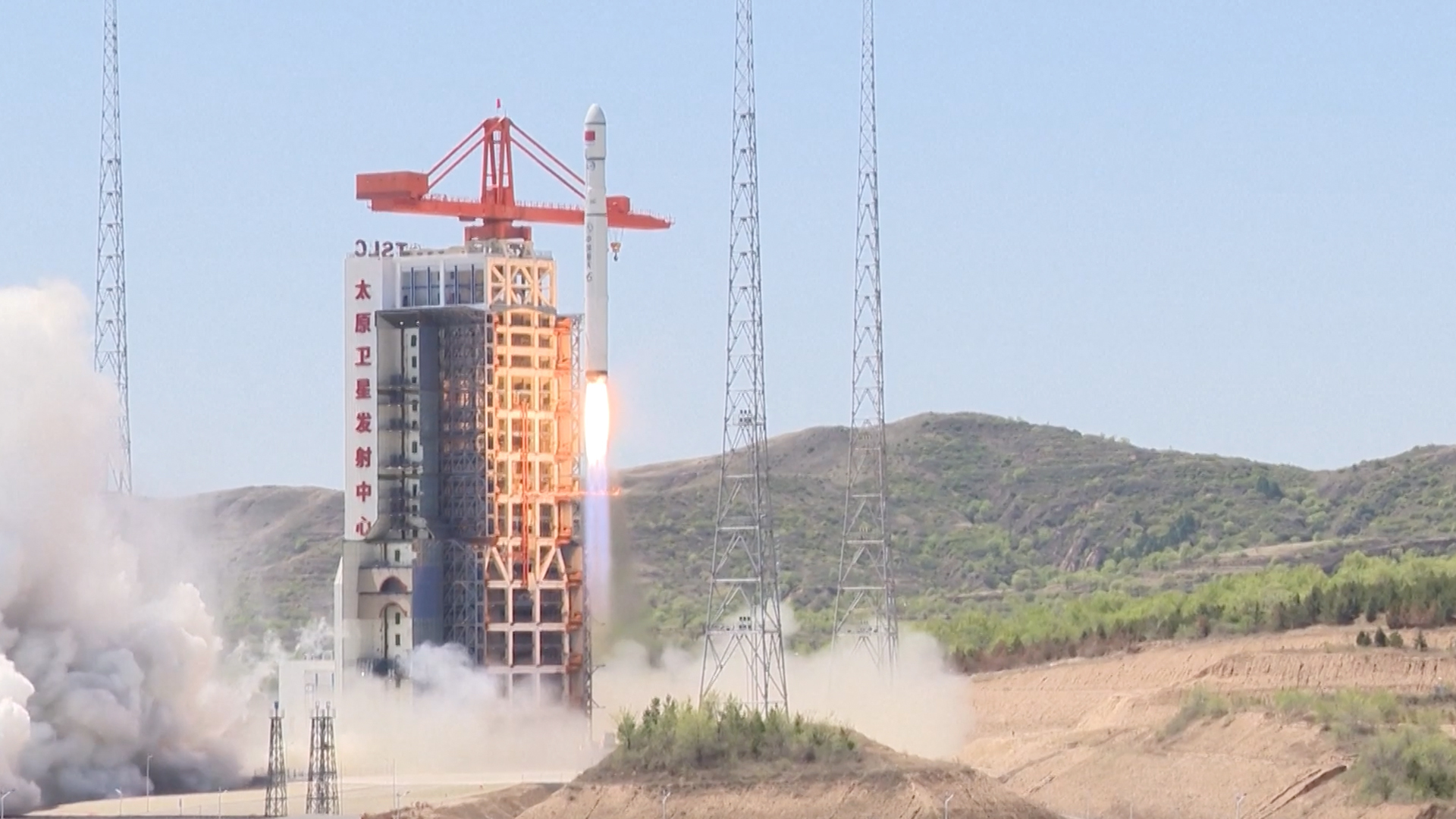China launches 4 satellites on 1st flight of new Long March 6C rocket (video)
The rocket will help China meet the growing demand from its burgeoning commercial space industry.
China launched its first Long March 6C rocket, helping the nation further its goal of launching 100 orbital missions this year.
The 131-foot (43-meter) Long March 6C rocket took off from the Taiyuan Satellite Launch Center in China's mountainous Shanxi province at 11:21 EDT on Monday, May 6 (0321 on May 7). The two-stage, single core Long March 6C is designed to launch small and medium-sized satellites to both low Earth and sun-synchronous orbits. Payload sizes vary depending on desired orbit, but range from 6 to 10 tons.
The rocket carried four satellites on its maiden voyage, SpaceNews reported. Two of them are synthetic aperture radar, while the other two are optical Earth observation platforms.
Related: China to debut new Long March rockets in 2024

The Long March 6C uses a kerosene-derived fuel known as RP-1 and liquid oxygen propellant, making it more environmentally-friendly than previous generations of Long March rockets.
The Long March 6C can accommodate a variety of payload faring sizes, making it adaptable for different mission requirements.
The rocket will help China meet the growing demand from its burgeoning commercial space industry for vehicles capable of launching small and medium-sized satellites to sun-synchronous orbits, according to China Daily.
Get the Space.com Newsletter
Breaking space news, the latest updates on rocket launches, skywatching events and more!
The Long March 6C was China's 20th launch of the year, coming on the heels of the launch of the Chang'e 6 lunar far side sample return mission. The nation aims to launch 100 mission this year, with roughly one third of them slated to be commercial missions.
Join our Space Forums to keep talking space on the latest missions, night sky and more! And if you have a news tip, correction or comment, let us know at: community@space.com.

Brett is curious about emerging aerospace technologies, alternative launch concepts, military space developments and uncrewed aircraft systems. Brett's work has appeared on Scientific American, The War Zone, Popular Science, the History Channel, Science Discovery and more. Brett has English degrees from Clemson University and the University of North Carolina at Charlotte. In his free time, Brett enjoys skywatching throughout the dark skies of the Appalachian mountains.









